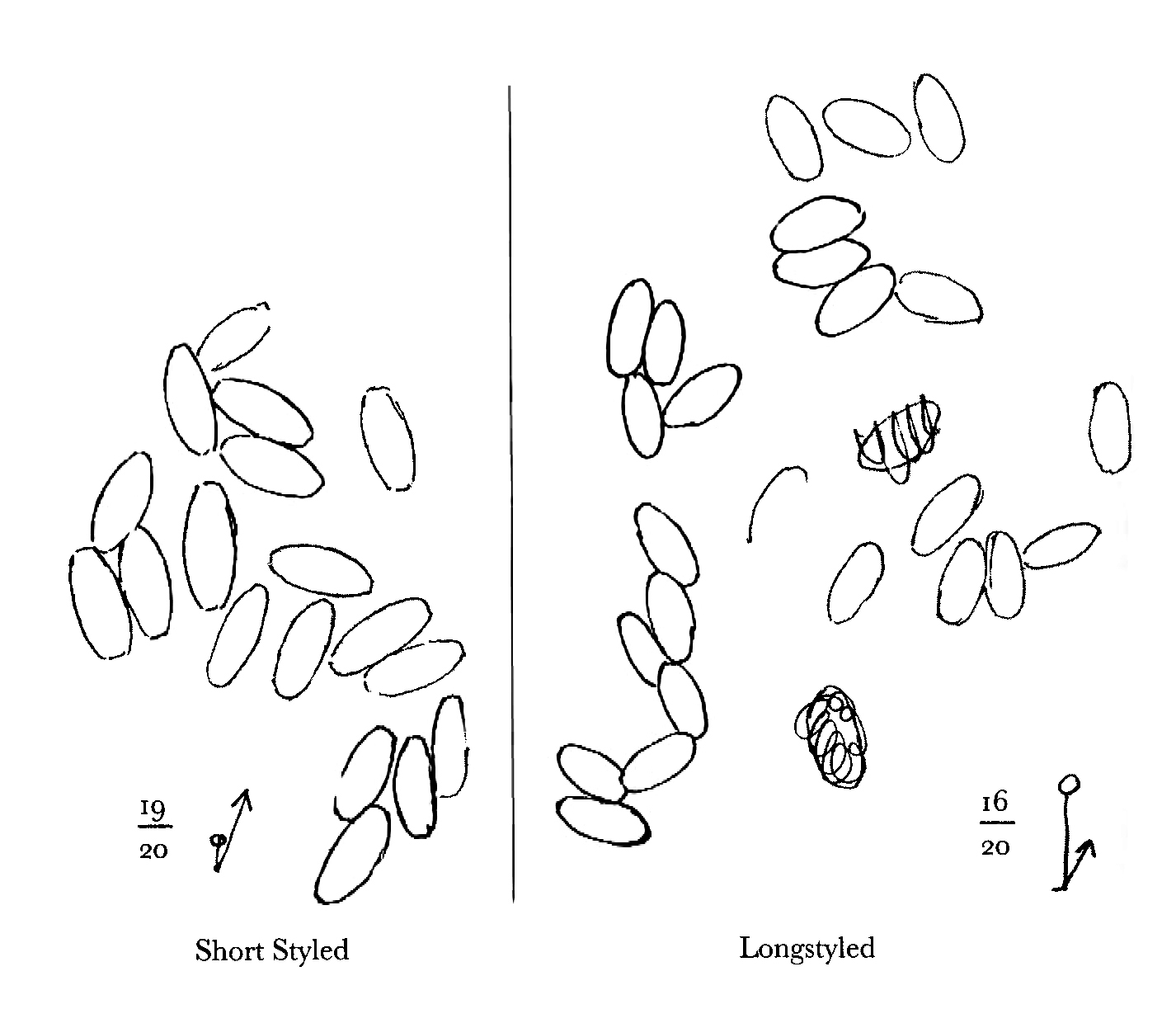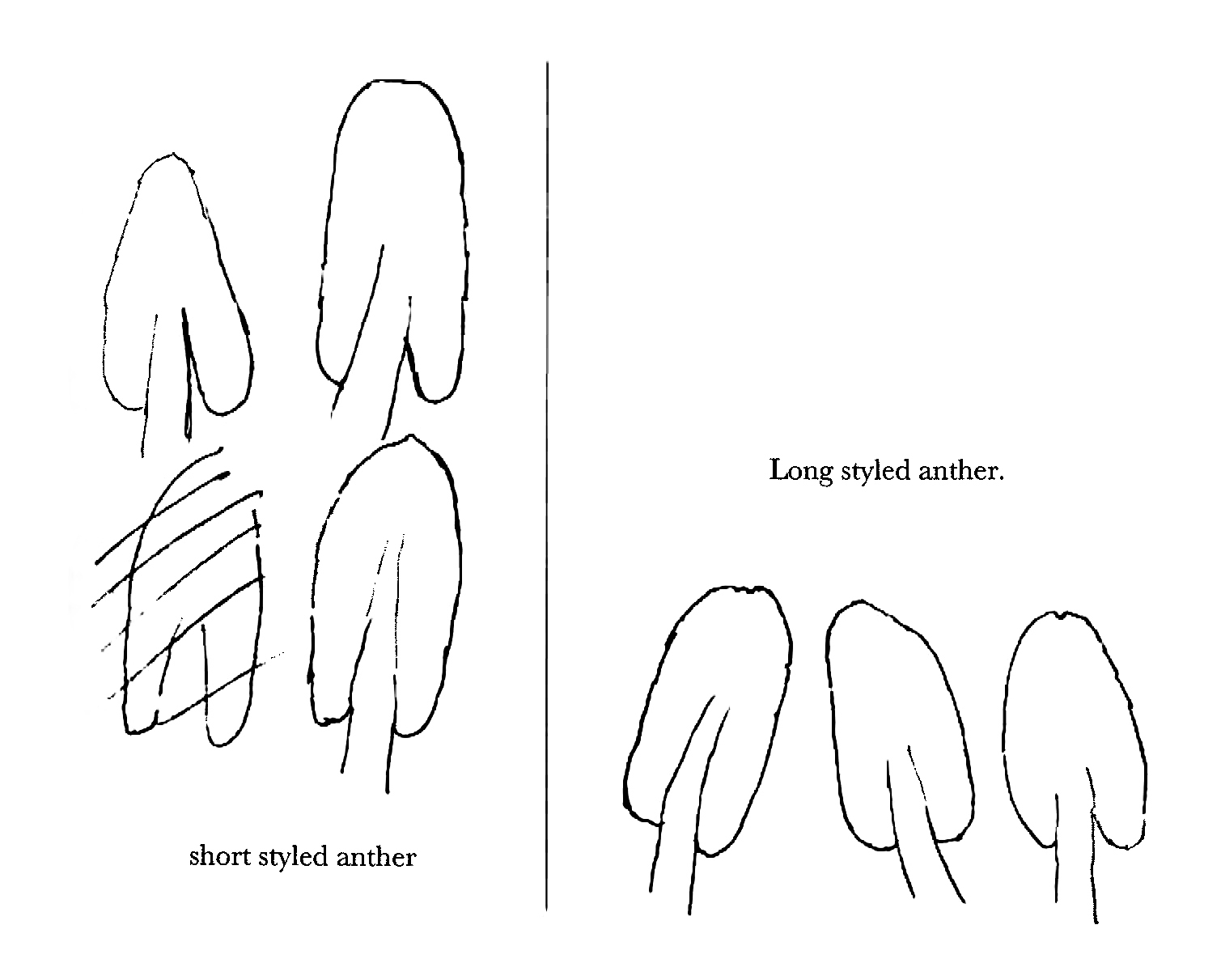From W. E. Darwin [19 May 1864]
S.ton
Thursday
My Dear Father,
I forgot to thank Mama for cornplaster in her last, my corns are better from Banting I think.1
I went to Lyndhurst yesterday, & sent little boys in the bogs to pick Menyanthes,2 & there were both kinds, which I send in tin case. Also drawings of pollen & anthers.3
The long styled had decidedly the largest stigma, & the short styled stigmas were very unequal in size4 I have not yet counted the proportion but will,5 & keep the flowers in case you want anything more.
I got your Cowslip this morning & will measure it.6
I am going to write to a friend in the Isle of Wight about Rhamnus.7
I am very glad you are well
I enclose photographs How many will you have.8
Your affect son | W E D—
[Enclosure 1]9
May 19— 1864
Menyanthes

[Enclosure 2]10

CD annotations
Enclosure 1, verso: ‘Menyanthes’ blue crayon
short-styled long-styled 19 = 16 : : 100 to x 19) 16, 0000 84.211
Footnotes
Bibliography
Banting, William. 1863. Letter on corpulence, addressed to the public. 2d edition. London: Harris/on & Sons.
Chambers: The Chambers dictionary. Edinburgh: Chambers Harrap Publishers. 1998.
Forms of flowers: The different forms of flowers on plants of the same species. By Charles Darwin. London: John Murray. 1877.
Summary
Sends specimens of Menyanthes with observations and drawings [see Forms of flowers, p. 115].
Letter details
- Letter no.
- DCP-LETT-4502
- From
- William Erasmus Darwin
- To
- Charles Robert Darwin
- Sent from
- Southampton
- Postmark
- MY 19 64
- Source of text
- DAR 110: B43–7
- Physical description
- ALS 4pp †, diags 2pp †
Please cite as
Darwin Correspondence Project, “Letter no. 4502,” accessed on 23 April 2024, https://www.darwinproject.ac.uk/letter/?docId=letters/DCP-LETT-4502.xml
Also published in The Correspondence of Charles Darwin, vol. 12


